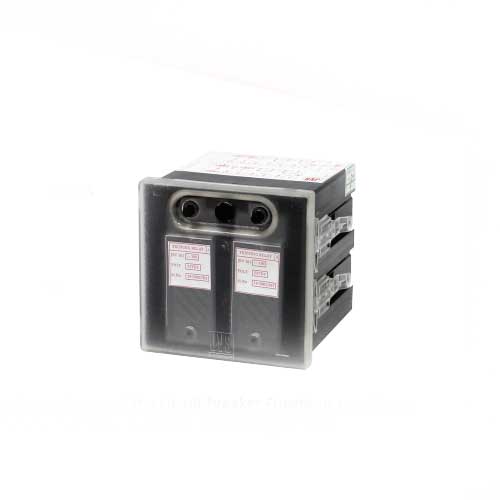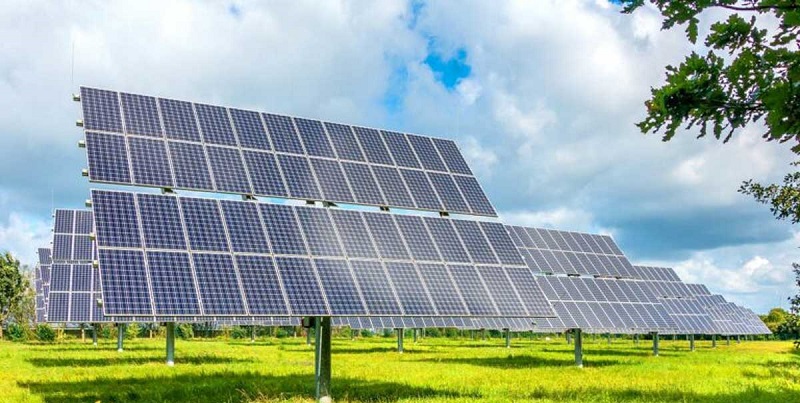Schedule a Call Back
Heat Exchangers: A Booming Business
 Technical Articles
Technical Articles- Jun 02,11
Energy savings is rapidly emerging into a massive industry worldwide, and this global trend towards significantly reducing heat energy costs, and increasing energy efficiency will continue to witness the Heat Exchanger sector emerge as the greatest beneficiary.
 With the average age of a Heat Exchanger ranging from 20 to 30 years, the large installed base of aging Heat Exchangers will require periodic renewal and upgrading.
With the average age of a Heat Exchanger ranging from 20 to 30 years, the large installed base of aging Heat Exchangers will require periodic renewal and upgrading.
Natural wear-and-tear of Heat Exchangers and modernisation initiatives adopted in key end-user industries will additionally magnify the business opportunity offered by replacements.
Evolution of new product designs with value added functional features and benefits would provide the sweetener required for pushing equipment replacement demand to the fore.
End-use segments include chemicals industry, fuel processing, HVAC and refrigeration, food and beverage, power generation and increasingly nuclear plants.
Thus, with mainstay segments especially having an enormously broad base, the global Heat Exchanger market is set to thrive on replacement demand emerging from frequent upgrades and technological changes.
 On the end-use front, the industry is witnessing a rapid shuffling of shares with emerging applications in environmental remediation, propped by tightening legislation, increasingly outnumbering the traditional applications within chemical, fuel processing, and power generation sectors. Rising energy prices are expected to be among the major drivers of Heat Exchanger market growth in the near future.
On the end-use front, the industry is witnessing a rapid shuffling of shares with emerging applications in environmental remediation, propped by tightening legislation, increasingly outnumbering the traditional applications within chemical, fuel processing, and power generation sectors. Rising energy prices are expected to be among the major drivers of Heat Exchanger market growth in the near future.
A Heat Exchanger is basically a device in which energy is efficiently transferred from one fluid to another across a solid surface, where fluids are separated by a solid wall, so that they neither mix nor have direct contact.
In the most efficient Heat Exchangers, the surface area of the wall between the fluids is maximised while simultaneously minimising the fluid flow resistance. Fins or corrugations are sometimes used with the wall in order to increase the surface area and to induce turbulence.
Heat Exchangers can be used in industrial oil coolers, industrial boiler coolers, industrial chilled water systems, industrial ground water systems, industrial transmission and engine coolers, industrial wastewater heat recovery and industrial condensers and evaporators in refrigeration systems.
In India, they are widely used in automobiles, petroleum refineries, chemical plants, petrochemical plants, natural gas processing, refrigeration, power plants, air conditioning and space heating.
 One common example of a Heat Exchanger in India is the radiator in a car, in which a hot engine-cooling fluid, like antifreeze, transfers heat to air flowing through the radiator in a car, in which the heat source, being a hot engine-cooling fluid, water, transfers heat to air flowing through the radiator, (i.e., the heat transfer medium).
One common example of a Heat Exchanger in India is the radiator in a car, in which a hot engine-cooling fluid, like antifreeze, transfers heat to air flowing through the radiator in a car, in which the heat source, being a hot engine-cooling fluid, water, transfers heat to air flowing through the radiator, (i.e., the heat transfer medium).
It is a growth industry and as Mr Ashok Kumar Wadhwa of Ashok Industries, a Chennai-based SME, puts it succinctly: "If you want to get into the Heat Exchanger industry, do it now or else you will miss the bus." However, it is sad but true that despite the enormous demand in India, we still remain a net importer.
Since huge investments are required, it is becoming difficult for SMEs to survive. One solution, says Mr Wadhwa is aid from the Government, though he is worried about red tape.
"Since India is an emerging market, the floodgates have already been opened and lot of MNCs have been investing and do not forget the upcoming atomic power plants needed for the huge energy required," he adds. But, bigger units like Mersen India Pvt Ltd, suggest that Special Economic Zones (SEZs) would benefit them greatly as the global market is on a massive boom, especially in China. Thus turnaround time and meeting delivery schedules would be greatly aided, as well as manufacturers receiving advantages of duty and tax benefits.
Mr P Velsamy, General Manager of Mersen India, says: "We at Mersen have been in this business for more than 125 years and make graphite Heat Exchangers."
He further argues that experience, qualifications and delivery are important aspects in the Heat Exchanger sector. The latest technology is available but it has to be made cost effective. The market has a huge potential though it is a competitive one, he says.
In a way, ceramics are now being considered as the materials for Heat Exchanger technology, taking us to a modern stone age, adds Mr Wadhwa.
 Competition in the global Heat Exchangers market has, over the last few years, intensified largely as a result of the emergence of low cost Asian manufacturers.
Competition in the global Heat Exchangers market has, over the last few years, intensified largely as a result of the emergence of low cost Asian manufacturers.
New entrants from Russia, Eastern Europe, and South East Asian nations such as India, and China have made remarkable inroads into the international Heat Exchangers market, making prices more competitive.
However, SME vendors are willing to accept tighter margins in favour of higher volume orders. Therefore, pricing will be the core competitive factor in the marketplace.
Such aggressive pricing strategies have forced major providers to reduce their prices, and operate on thin margins. The situation has been exacerbated by the tough economic climate, which has induced cash-strapped end users to place a greater emphasis on cost, rather than quality, while buying new products.
With SMEs being forced to depend on a few customers, MNCs, especially automobile manufacturers preferring to start their own ancillary units or captive vendors and rapid technology changes, SMEs have been forced to go on the defensive.
There are also numerous types of heat transfer equipment and SMEs, especially those servicing industrial needs.
According to one analyst, demand sensitivity for Heat Exchangers varies across end-use sectors.
Demand in traditional end-use segments like the chemical industry are prone to exhibit knee-jerk sensitivity to economic conditions, while demand in end-user industries such as in oil and gas, and nuclear power tend to display more resilience to unfavourable economic conditions.
Given the significant investments in energy and petrochemical sectors, these industries have displayed remarkable resilience, especially in the developing markets.
The market for Heat Exchangers in HVAC and Refrigeration Industry in the Asia-Pacific is forecast to reach US $271.13 million by the year 2015, growing at a rapid Compounded Annual Growth Rate (CAGR) of 5.96%.
Interestingly, the ongoing global economic recession has fuelled, and sharpened the emphasis on utilisation of energy saving equipment, and Heat Exchangers are once again the prime beneficiary of this trend.
This scenario is especially pronounced in countries like China where the energy savings sector is particularly supported by the government's economic stimulus plan thus sheltering the industry from the economic downturn.
Environmental concerns, and related legislations therefore further push the economic incentives for adopting energy efficient technologies and products.
Growth rates in emerging nations are encouraging, although coming from a much smaller base due to a low penetration rate.
Additionally, a healthy demand for Heat Exchangers for nuclear power plants, keeping in view the growing focus on nuclear power as an alternative for conventional energy, is expected to contribute to new growth. With a number of new nuclear reactors expected to be constructed and commissioned worldwide, strong growth opportunities exist in this space.
Two important problems in Heat Exchanger analysis are rating existing Heat Exchangers and sizing Heat Exchangers for a particular application. Rating involves the determination of the rate of heat transfer, change in temperature of the two fluids, and the pressure drop across the heat exchanger.
Sizing involves selection of a specific Heat Exchanger from those currently available or determining the dimensions for the design of a new heat exchanger, given the required rate of heat transfer and allowable pressure drop.
A recent report on the global Heat Exchanger market projected it to cross the US$ 12.7 billion mark by 2012. Europe, representing the largest Heat Exchanger market, is estimated to account for a share of more than US$ 4.5 billion by 2012. Asia-Pacific represents the fastest growing segment, exhibiting a CAGR of 4.8% over the period 2000-2010.
The shell and tube Heat Exchangers market, the largest product segment, is projected to reach US$ 3.5 billion by 2015. Europe, the largest market within the segment, is expected to have grown by at least 2% over the period 2000-2010. Productivity improvements, in terms of enhanced efficiency, greater durability, lowered fouling and metal fibre-enabled integral cleaning are set to revitalize the shell and tube exchangers market.
Asia-Pacific is the fastest growing market in plate and frame Heat Exchangers, and is projected to grow by around 12% in the next five years.
Sales of Heat Exchangers to the chemical industry, the largest end-use segment, are projected to reach US $2.7 billion by 2012. Heat Exchanger sales to the fuel processing industry, the fastest growing end-use segment, are expected to have expanded at a CAGR of 3.2% over the period 2000-2010.
Deriving growth from the astronomical prices of oil in the world, investments in the fuel processing industry are expected to increase in the near future. These investments are expected to translate into orders for Heat Exchanger suppliers and drive growth. The market for Heat Exchangers used in the HVAC and refrigeration industry is projected to grow to over US $2.5 billion by 2012.
Shell and tube exchangers are forecast to retain their market dominance over the analysed period, while plate and frame exchangers, air coolers, and other Heat Exchangers are slated to witness rapid market expansion through the years. Chemicals and HVAC and refrigeration industries are expected to continue to be the major end-use industries for Heat Exchangers. Environmental concerns are likely to expedite the markets' adoption of closed cooling circuits, knocking out the open systems. All the end-use segments are bound by different environmental regulations, subject to several product standards that are constantly changed.
Companies profiled here include a global force such as Alfa Laval, which has a major presence in India, and recently bagged a huge contract from the Australian Navy. At the other end of the segment are SMEs like Ashok Industries that make a large variety of automobile and industrial type radiators, oil coolers, and Heat Exchangers.
Having been in the field since 1956, Mr Wadhwa, its Managing Director, feels that the basic problem is that of lack of skilled labour. Nowadays, he points out, there are many changes that are occurring rapidly. He cites the fact that all vehicles now come with aluminium radiators, which have a very low lifecycle.
So, while the replacement market opportunities loom large, also lies therein the threat of new technological shifts towards a new metal.
His customers include the Railways, Indian Air Force, Corporation of Chennai, BEML, Neyveli Lignite Corporation, CPCL, MFL, Atomic Power Corporation, and TVS. In the middle are moderately larger companies, like Mersen India Pvt Ltd, which has associates or presence in 19 countries.
Mersen offers Graphite Heat Exchangers in shell and tube, cylindrical block type, cubical type, as well as a wide variety of condensers, coolers, evaporators, heat recovery systems, and plate type Heat Exchangers.
Using its international contacts to the utmost it uses metals like titanium, tantalum, zirconium, etc., in its manufacturing process.
"The rapid upward trend of input cost of material is the challenge to maintain the price and profit margin," says Mr P Velsamy, General Manager of Mersen India adding that he for one would prefer to have "Free Trade Zones" in India.
Business in India is booming, and new projects are on the anvil, though SMEs are yet to find ways of cashing in on this boom.
Characteristics of the Sector
- Fortunes of the sector linked with that of the overall industry
- Manufacturing sector is the key end-user sector of capital goods
- Labour is highly cost-competitive
- Inputs/raw materials used are mainly local/domestic in origin
- Rapid changes in technology
- Relative lack of sub-contracting arrangements, despite large scale SME presence in engineering sector
- Lags in strong institutional mechanisms for export credit and promotion
- Public Sector Enterprises (PSEs) have dominance in heavy engineering, machine tools, boiler manufacturing
- Output concentrated with top few companies in most product groups, generally with large PSEs, followed by a middle layer of companies comprising large private sector players and multi-national companies, followed by a large number of small units at the bottom of the pyramid
- Presence of a large width of products, with almost all major capital goods being manufactured locally
- Indian companies, in general, lack export thrust, as the focus is largely on the domestic market
Related Products

High Speed Tripping Relay Two Element Relay - Jrv 181x2
JVS Electronics Pvt Ltd offers a wide range of high speed Read more

Plenty of Motion Possibilities in a Compact Housing
B&R Industrial Automation offers a wide range of plen Read more

High Speeed Tripping Relay Three Element Relay
JVS Electronics Pvt Ltd offers a wide range of high speed tripping relay three element relay - JRV 181x3.












